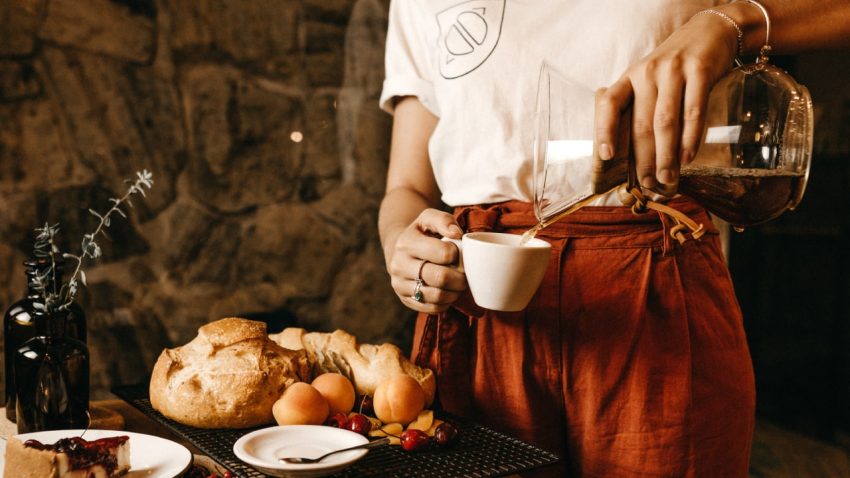In the Philippines, drinks have long been an integral part of meals. People here enjoy a variety of beverages not just to satisfy their thirst, but also to complement their food. From traditional homemade drinks to commercially produced products, there is something for everyone in the vast array of Philippine beverages. This blog post will examine some of the common and unique drinks found in this nation so that readers can gain an appreciation of their culture and cuisine.
Kapeng Barako: Giving Coffee Culture a Filipino Touch
Kapeng Barako is a type of coffee only grown in the region around Batangas City in the Philippines. It has unique notes of smoke, chocolate, and even nuts which makes it quite distinct from other coffee varieties available on the market today. This type of coffee is usually brewed with sugar and served with condensed milk for a sweet and creamy drink perfect for any occasion.
The artistry behind making Kapeng Barako comes not just from perfecting its roasting, but also from understanding how different brewing methods bring out its best flavors, be it freshly ground beans brewed using French press machines or warm espresso extractions taken from Italian mocca pots. There are many ways one can prepare Kapeng Barako, depending on preference and whatever sort of occasion demands it; either way, it’s sure to be enjoyed by anyone who tries it.
Tuba: A Sweet Traditional Drink From Across The Islands
Tuba is another traditional Filipino drink made from fermented coconut palm sap collected from trees all across the country’s islands, Batanes in the northernmost tip to Mindanao down south, as well as many places in between these regions.
It has a slightly sweet taste, with hints of vinegar, and is often served as an accompaniment to savory dishes or even used as a marinade for meats before cooking them (a dish known as “Lechon Paksiw”). It can be enjoyed either warm or cold depending on preference, making it extremely versatile when consumed on its own or with food.
Many people find that Tuba pairs surprisingly well with certain types of seafood like shrimp due to its umami flavors, especially when drank cold, though this beverage works just as nicely atop any type of savory dish inclusive curry dishes such as Bicol Express or Pinakbet (vegetable stew).
Its subtle sweetness adds something special to every meal while its acidity helps cut through fatty richness or spice levels which helps elevate each bite without overpowering flavor profiles making this drink an essential addition to any gathering regardless if eaten indoors or outside!
Lambanog: A Filipino Alcoholic Beverage Worth Seeking Out
Lambanog isn’t your conventional alcoholic beverage; instead, this traditional Filipino drink is made from distilled palm wine and contains around 40-65% alcohol by volume (ABV).
It has a strong aroma similar to that found in rum which makes it quite distinct from other types of Philippine drinks available on the market today; however, one sip will reveal subtle fruity notes mixed together with herbal ones alongside a hint of sweetness making way for what could easily consider ‘the quintessential Philippine spirit’.
Lambanog doesn’t get nearly enough credit for being more than just a mere alcoholic beverage: because aside from having medicinal qualities such as being able to combat fever reduce inflammation and prevent colds, it’s also said that drinking Lambanog can help strengthen relationships between family members & friends due its passed down nature rather than being bought off shelves as most modern spirits do nowadays allowing drinkers better connect one another & appreciate what binds them closer together!
Sago’t Gulaman: Refreshments That Appeal To Everyone
Sago’t Gulaman is one of those classic refreshments commonly sold throughout various provinces within The Philippines thanks largely due to its affordability & availability both commercially & traditionally made at home making this delightful combination accessible practically everywhere!
This beverage consists mainly of sago pearls cooked in water with flavoring syrup added along with cubes or strips of agar jelly giving texture and adding flavorful depth without much effort needing to put into the preparation process itself!
The sweetness level can be adjusted according to personal taste preferences, ranging everything from mild sugary edge to more intense depending on how much everyone likes does allow everyone joins the fun feeling fully satisfied afterward!
Furthermore knowing no gelatin is used means certain dietary restrictions don’t need relenting to enjoy something refreshing after a meal alongside family members & friends alike helping create memories that last a lifetime through collective experience life offered up tableside sharing spots around whichever province may dwell!
Kalamay Ube: Crafting Something Delicious From Few Ingredients
Kalamay Ube is another classic Filipino drink that’s gaining popularity among locals due to its something-for-everyone appeal thanks to its combination of sweet purple yam paste with glutinous rice flour; pandan leaves; coco cream; brown sugar; condensed milk; evaporated milk; coconut shreds; raisins; butter; latik (toasted coconut fat); cashews nuts & ube jam giving this beverage unique textures & flavors that remain unforgettable after every sip!
Salabat: The magic ginger
Salabat is a hot ginger tea that has been a staple drink in many Filipino households since colonial times when it was brought over by Chinese traders as a gift exchange item between cultures. It’s known for its ability to soothe symptoms related to digestive issues such as nausea or indigestion without impacting taste or flavor plus its caffeine free which makes enjoying this beverage anytime easy!
Conclusion:
From kapeng barako coffee to salabat tea, the beverages found in Philippine cuisine are varied and fully flavored making them perfect accompaniments to both savory dishes or just enjoyed alone whichever way you choose you’re sure to experience something new each time while exploring these traditional delights!
